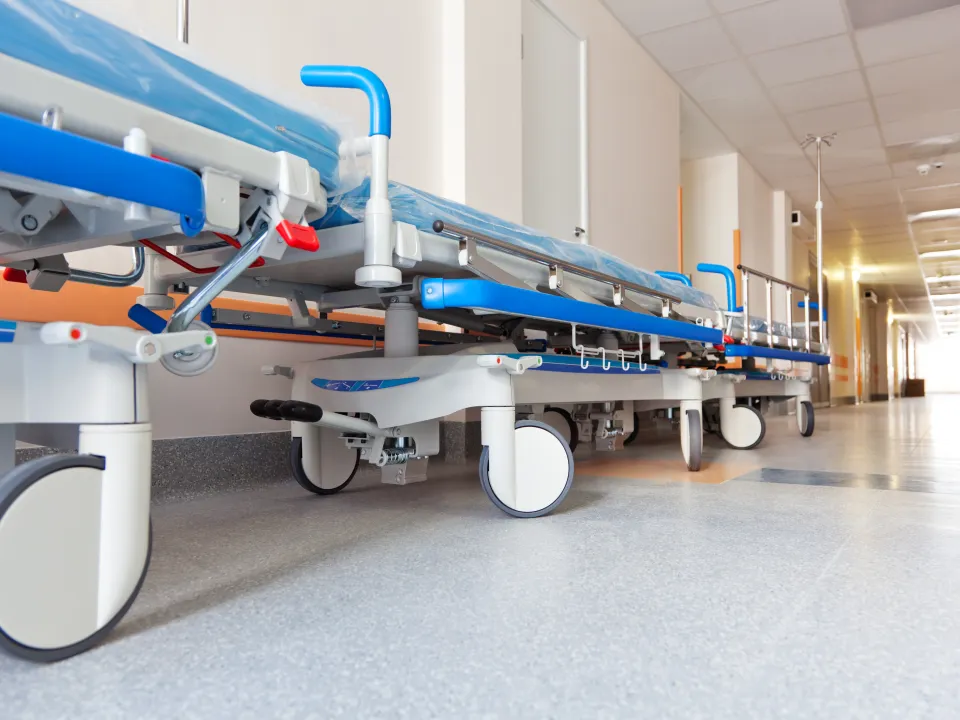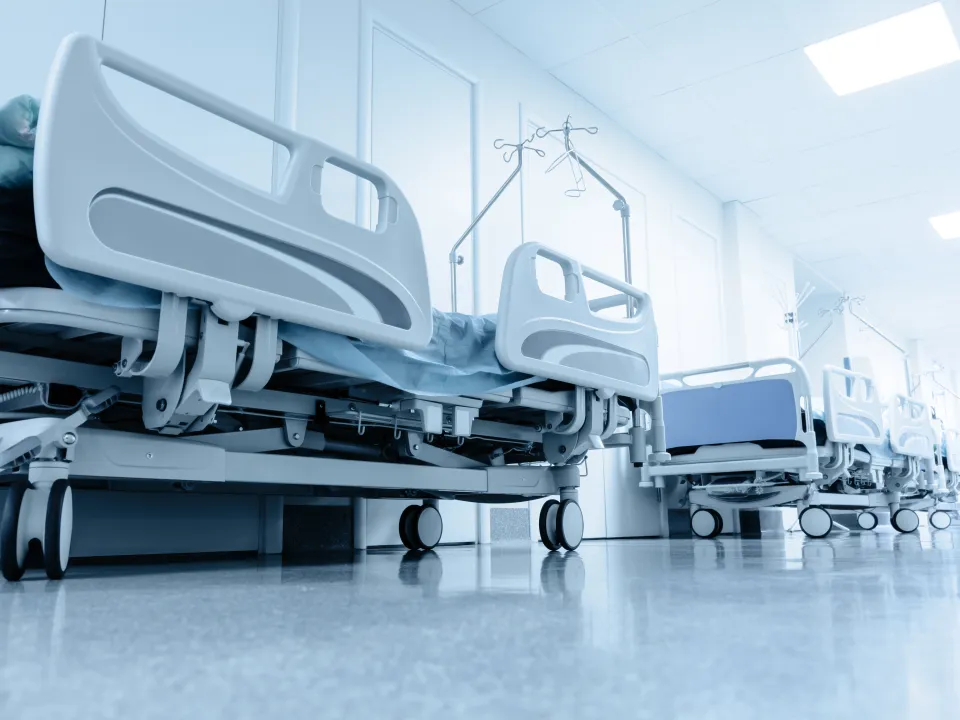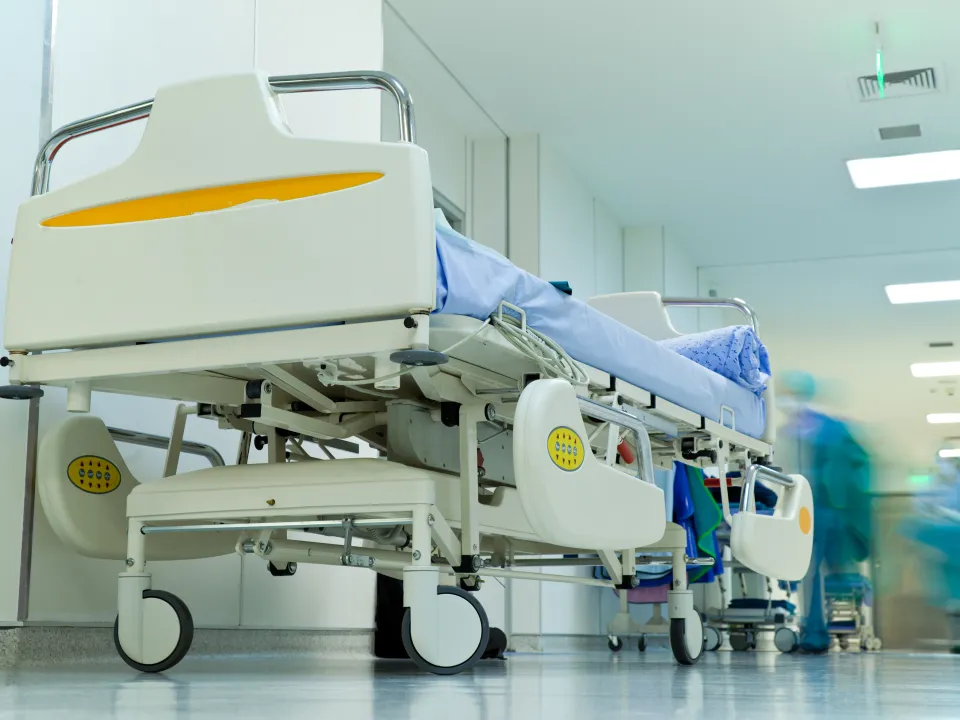The top 10 reasons for tracking your hospital beds with RFID
Is a shortage of beds in your hospital affecting patient care? Are your clinical and engineering staff spending far too much time looking for beds?
Due to the physical size of most hospitals it is often difficult to establish exactly where beds are. Tracking the location of beds, patient trolleys and cots with RFID technology is proven to increase availability, efficiency and utilisation. It also cuts down time spent by staff looking for a specific bed.
So if you still need persuading, here are the top 10 reasons why you should track your hospital beds (and, of course, patient trolleys and cots):
1. Improve utilisation
With acute bed shortages in most NHS Trusts, making maximum use of existing beds has to be a key priority. RFID tracking technology can support any bed management system as it provides a level of visibility which is impossible to achieve with any manual systems. It can help identify bottlenecks, e.g. where beds have been waiting too long for repairs or cleaning and are therefore unavailable.
2. Quickly find beds for maintenance and repair
Clinical engineers often walk miles and spend hours looking for equipment which is due to be serviced or repaired. Being able to locate beds easily means more time is available to concentrate on core tasks. This in turn improves the up-time of beds, increases availability and often avoids the need to hire in additional beds to cope with demand, which in turn helps reduce costs.

3. Identify and report faulty beds
RFID tracking enables the unique identification and quick location of specific beds. If any bed is reported as faulty it’s easier to identify and replace it to avoid any failure whilst it’s in use. As additional data including the age of the bed can be captured, an RFID system can also help ensure that the correct beds are replaced when they come to the end of their useful lives.
4. Identify those specialist beds
Looking for a specialist bed on a large hospital site can be timely and difficult. With only a handful of bariatric, ultra-low or spinal beds available, some patients have to temporarily be put into less suitable beds, which can tie up staff resources unnecessarily or negatively affect patient comfort or safety. Using the wrong bed can lead to equipment damage, for example where a bariatric patient is placed in a normal bed which is not designed to support their weight.
5. Manage hired beds
Where beds are hired in, it is surprisingly common for hospitals to ‘mislay’ hired beds, which can lead to large bills from the rental company. RFID tracking can help identify and locate those which are no longer needed to avoid any late return fees or unnecessary hire charges. Tracking hired beds can also ensure that the number of beds you are paying for are actually on site, which a number of trusts have found out is not necessarily the case when using RFID technology.
6. Make sure your contractors are doing a good job
If you use a service contractor to look after your beds for cleaning or maintenance, RFID tracking can help monitor performance to ensure repair times are within a specified time scale or cleaning processes are carried out thoroughly. One hospital in England using RFID found that beds only spent an average 1.5 minutes in the area where they are being cleaned, a process that should take 7 minutes to complete.

7. Improve infection control
In case of an infection outbreak, being able to see where a particular bed has been is useful for the infection control team, so it can be quickly isolated and decontaminated before further spread occurs. Being able to identify contaminated beds without having to touch them, can present another benefit for infection control.
8. Reduce damages
An RFID system provides a solid audit trail of device locations and can deliver great support for incident reporting. It captures device locations and highlights where the damage occurred. This helps with cross charging repair costs and identifying training needs. A Trust was suffering regular damage to medical devices, costing £1,600 each. They used RFID to identify in which areas damage had occurred and training was put in place to minimise future damage.

9. Ensure compliance
As a medical device, beds fall under the MHRA recommendation which means that clinical engineering teams need to ensure there are systems in place to record the current whereabouts of each bed. RFID simplifies and speeds up the process of auditing and allows for more frequent inventory checks. Accurate records also help make sure that beds are maintained correctly, so requirements from the Health & Safety Executive are satisfied.
10. Collect quality data to support strategic decision making
The data gathered by tracking beds supports cost-effective and evidence-based strategic decisions. This can include deciding whether existing assets should be maintained or retired based on their maintenance history. Good quality utilisation data can also help with forecasting expected demands to support a convincing case for replacement funding or help prioritise actions such as repairs to ensure sufficient suitable beds are available for patient care.

